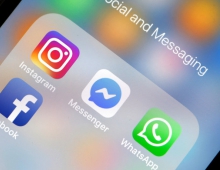
Facebook Officially Introduces Facebook News
Facebook is starting to test Facebook News, a dedicated place for news on Facebook, to a subset of people in the US.
News will present Facebook users stories within the Facebook app. It also highlights the most relevant national stories of the day. News articles will continue to appear in News Feed as they do today.
People will be able to click on a tab in the main navigation of the Facebook app (similar to Facebook Watch), or in their Bookmarks. Facebook News is currently mobile-only.
The stories that will appear at the News tab are chosen by a team of journalists.
Personalization is based on the news you read, share and follow. Facebook News uses many of the signals from News Feed uses to make sure you see more of what interests you, and less of what doesn't: engagement (Likes, shares, comments), and past interest in news stories, topics and publishers.
Facebook says that what users read in Facebook News wouldn’t affect what was in their News Feed.
News also includes your Subscriptions, a section for people who have linked their paid news subscriptions to their Facebook account. Facebook also offers users controls to hide articles, topics and publishers they don’t want to see.
Regarding personalization, publishers worry that machine learning has limits. Facebook says that it wants to serve both people and news publishers, and not just the big national players. "We want new forms of journalism in the digital age, including individual, independent journalism, to flourish. So we will continue to expand the algorithmic selection of stories driving the majority of Facebook News," said Mona Sarantakos, News product manager.
Facebook News will feature a wide range of content across four categories of publishers: general, topical, diverse and local news. Categories like entertainment, health, business and sports seems to be prioritized.

In order to be inlcuded to Facebook News, publishers need to be in Facebook's News Page Index, which was developed in collaboration with the industry to identify news content. They also need to abide by Facebook’s Publisher Guidelines, these include a range of integrity signals in determining product eligibility, including misinformation — as identified based on third-party fact checkers — community standards violations (e.g., hate speech), clickbait, engagement bait and others.
During the initial test, Facebook will showcase local original reporting by surfacing local publications from the largest major metro areas across the U.S., beginning with New York, Los Angeles, Chicago, Dallas-Fort Worth, Philadelphia, Houston, Washington DC, Miami, Atlanta and Boston. In the coming months, Facebook News will include local news from Today In.
Facebook did not provide a list of participating publishers, but screenshots of the News section include stories from The Wall Street Journal, Time, The Washington Post, BuzzFeed News, Bloomberg, Fox Business, Business Insider, NPR and others; spokespeople for The Post, BuzzFeed and the LA Times confirmed their participation.
Facebook plans to pay at least some of the participating outlets for their content, as the company wants to assuage complaints that tech platforms have siphoned off major revenue streams from news outlets — classified advertising is one example — while paying nothing for the articles and images that appeared on the site.
According to reports, Facebook is paying some publishers $1 million to $3 million a year to put their articles in the new section. In most cases, links in the new section will take readers back to publishers’ websites, which helps them attract advertising and subscriptions.
Video will not be available in the launch version of the news tab, but Facebook is expcted to add video capabilities in early 2020.
So even if publishers have been burned by relying too much on the social network in the past, it sounds like they’re not going to give up on working with Facebook.
With Facebook News, Facebook dangles extra traffic, and journalism outlets leap through its hoop and into its cage.





















